 W
WAndré-Marie Ampère was a French physicist and mathematician who was one of the founders of the science of classical electromagnetism, which he referred to as "electrodynamics". He is also the inventor of numerous applications, such as the solenoid and the electrical telegraph. An autodidact, Ampère was a member of the French Academy of Sciences and professor at the École polytechnique and the Collège de France.
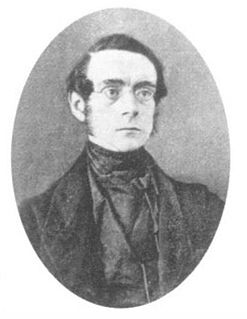 W
WGolding Bird was a British medical doctor and a Fellow of the Royal College of Physicians. He became a great authority on kidney diseases and published a comprehensive paper on urinary deposits in 1844. He was also notable for his work in related sciences, especially the medical uses of electricity and electrochemistry. From 1836, he lectured at Guy's Hospital, a well-known teaching hospital in London and now part of King's College London, and published a popular textbook on science for medical students called Elements of Natural Philosophy.
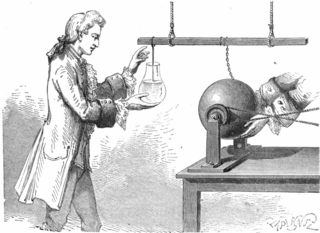 W
WGeorg Matthias Bose, also known as Mathias Bose, was a famous electrical experimenter in the early days of the development of electrostatics. He is credited with being the first to develop a way of temporarily storing static charges by using an insulated conductor. His demonstrations and experiments raised the interests of the German scientific community and the public in the development of electrical research.
 W
WSamuel Hunter Christie FRS was a British scientist, physicist and mathematician.
 W
WAndrew Crosse was a British scientist who was born and died at Fyne Court, Broomfield, Somerset. Crosse was an early pioneer and experimenter in the use of electricity. He became known after press reports of an electrocrystallization experiment he conducted in 1836, during which insects "appeared".
 W
WJohn Benjamin Dancer was a British scientific instrument maker and inventor of microphotography. He also pioneered stereography. By 1835, he controlled his father's instrument making business in Liverpool. He was responsible for various inventions, but did not patent many of his ideas. In 1856, he invented the stereoscopic camera. He died at the age of 75 and was buried at Brooklands Cemetery, Sale, Greater Manchester.
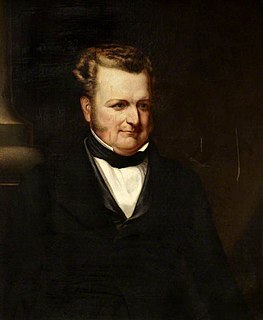 W
WJohn Frederic Daniell FRS was an English chemist and physicist.
 W
WThomas Davenport was a Vermont blacksmith who constructed the first American DC electric motor in 1834.
 W
WFrank Allston Davis was a publishing executive who founded the F. A. Davis Company in Philadelphia, Pennsylvania. After moving to the Tampa Bay Area, he introduced electricity to St. Petersburg, Florida, and founded the city of Pinellas Park.
 W
WEdward Davy was an English physician, scientist, and inventor who played a prominent role in the development of telegraphy, and invented an electric relay.
 W
WSir Humphry Davy, 1st Baronet was a Cornish chemist and inventor, who is best remembered today for isolating, by using electricity, a series of elements for the first time: potassium and sodium in 1807 and calcium, strontium, barium, magnesium and boron the following year, as well as discovering the elemental nature of chlorine and iodine. Davy also studied the forces involved in these separations, inventing the new field of electrochemistry.
 W
WPhilip H. Diehl was a German-American mechanical engineer and inventor who held several U.S. patents, including electric incandescent lamps, electric motors for sewing machines and other uses, and ceiling fans. Diehl was a contemporary of Thomas Edison and his inventions caused Edison to reduce the price of his incandescent bulb.
 W
WThomas Alva Edison was an American inventor and businessman who has been described as America's greatest inventor. He developed many devices in fields such as electric power generation, mass communication, sound recording, and motion pictures. These inventions, which include the phonograph, the motion picture camera, and early versions of the electric light bulb, have had a widespread impact on the modern industrialized world. He was one of the first inventors to apply the principles of organized science and teamwork to the process of invention, working with many researchers and employees. He established the first industrial research laboratory.
 W
WMichael Faraday was an English scientist who contributed to the study of electromagnetism and electrochemistry. His main discoveries include the principles underlying electromagnetic induction, diamagnetism and electrolysis.
 W
WBenjamin Franklin was a British American polymath and one of the Founding Fathers of the United States. Franklin was a leading writer, printer, political philosopher, politician, Freemason, postmaster, scientist, inventor, humorist, civic activist, statesman, and diplomat. As a scientist, he was a major figure in the American Enlightenment and the history of physics for his discoveries and theories regarding electricity. As an inventor, he is known for the lightning rod, bifocals, and the Franklin stove, among other inventions. He founded many civic organizations, including the Library Company, Philadelphia's first fire department, and the University of Pennsylvania.
 W
WEdmund Germer was a German inventor recognized as the father of the fluorescent lamp. He applied for a patent with Friedrich Meyer and Hans J. Spanner on December 10, 1926, which led to U.S. Patent 2,182,732. The patent was later purchased by the General Electric Company, which also licensed his patent on the high-pressure mercury-vapor lamp.
 W
WWilliam Gilbert, also known as Gilberd, was an English physician, physicist and natural philosopher. He passionately rejected both the prevailing Aristotelian philosophy and the Scholastic method of university teaching. He is remembered today largely for his book De Magnete (1600).
 W
WBernhard Goldenberg was a German engineer.
 W
WSir William Robert Grove, FRS FRSE was a Welsh judge and physical scientist. He anticipated the general theory of the conservation of energy, and was a pioneer of fuel cell technology. He invented the Grove voltaic cell.
 W
WOliver Heaviside FRS was an English autodidactic electrical engineer, mathematician, and physicist who brought complex numbers to circuit analysis, invented a new technique for solving differential equations, independently developed vector calculus, and rewrote Maxwell's equations in the form commonly used today. He significantly shaped the way Maxwell's equations are understood and applied in the decades following Maxwell's death. His formulation of the telegrapher's equations became commercially important during his own lifetime, after their significance went unremarked for a long while, as few others were versed at the time in his novel methodology. Although at odds with the scientific establishment for most of his life, Heaviside changed the face of telecommunications, mathematics, and science.
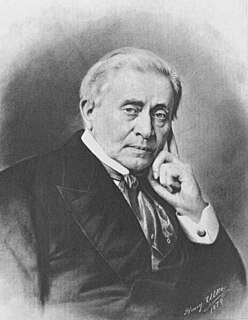 W
WJoseph Henry was an American scientist who served as the first Secretary of the Smithsonian Institution. He was the secretary for the National Institute for the Promotion of Science, a precursor of the Smithsonian Institution. He was highly regarded during his lifetime. While building electromagnets, Henry discovered the electromagnetic phenomenon of self-inductance. He also discovered mutual inductance independently of Michael Faraday, though Faraday was the first to make the discovery and publish his results. Henry developed the electromagnet into a practical device. He invented a precursor to the electric doorbell and electric relay (1835). The SI unit of inductance, the Henry, is named in his honor. Henry's work on the electromagnetic relay was the basis of the practical electrical telegraph, invented by Samuel F. B. Morse and Sir Charles Wheatstone, separately.
 W
WÁnyos István Jedlik was a Hungarian inventor, engineer, physicist, and Benedictine priest. He was also a member of the Hungarian Academy of Sciences, and author of several books. He is considered by Hungarians and Slovaks to be the unsung father of the dynamo and electric motor.
 W
WJames Prescott Joule was an English physicist, mathematician and brewer, born in Salford, Lancashire. Joule studied the nature of heat, and discovered its relationship to mechanical work. This led to the law of conservation of energy, which in turn led to the development of the first law of thermodynamics. The SI derived unit of energy, the joule, is named after him.
 W
WWilliam Thomson, 1st Baron Kelvin, was a British mathematical physicist and engineer born in Belfast. Professor of Natural Philosophy at the University of Glasgow for 53 years, he did important work in the mathematical analysis of electricity and formulation of the first and second laws of thermodynamics, and did much to unify the emerging discipline of physics in its modern form. He received the Royal Society's Copley Medal in 1883, was its President 1890–1895, and in 1892 was the first British scientist to be elevated to the House of Lords.
 W
WHeinrich Friedrich Emil Lenz, usually cited as Emil Lenz, was a Russian physicist of Baltic German descent who is most noted for formulating Lenz's law in electrodynamics in 1834.
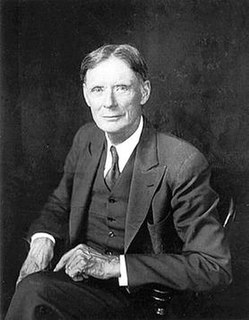 W
WJohn C. Lincoln was an American inventor, entrepreneur, philanthropist and in 1924, the Vice-Presidential candidate under the Commonwealth Land Party ticket. He held 55 patents on several electrical devices, founded the Lincoln Electric Co., invested in the construction of the Camelback Inn, presided over the Bagdad Mine and funded two hospitals in Phoenix, one which bears his name.
 W
WProf Magnus Maclean FRSE MIEE MICE LLD (1857-1937) was an electrical engineer who assisted Lord Kelvin in his electrical experiments and later became Professor of Electrical Engineering in Glasgow. The Magnus Maclean Memorial Prize given to students of electrical engineering is named in his honour. A native speaker of Scottish Gaelic, he also lectured in Celtic Studies at the University of Glasgow, delivering the MacCallum lectures, in English between 1901 and 1093. These lectures constituted the first official lectures in Celtic studies at the University.
 W
WJames Clerk Maxwell was a Scottish scientist in the field of mathematical physics. His most notable achievement was to formulate the classical theory of electromagnetic radiation, bringing together for the first time electricity, magnetism, and light as different manifestations of the same phenomenon. Maxwell's equations for electromagnetism have been called the "second great unification in physics" where the first one had been realised by Isaac Newton.
 W
WMajor-General Syed Ali Nawab (HI 1979, SBt, TPk, PE), was an engineering officer in the Pakistan Army Corps of EME, and a mechanical engineer with an MIMechE from UK and two Bachelors degrees, one in Electrical Engineering, and the other in Physics, Chemistry and Mathematics from Aligarh Muslim University (AMU). He was known for his classified works in the development of atomic bomb at PAEC and the Engineering Research Laboratories (ERL) in the 1970s.
 W
WGeorg Simon Ohm was a German physicist and mathematician. As a school teacher, Ohm began his research with the new electrochemical cell, invented by Italian scientist Alessandro Volta. Using equipment of his own creation, Ohm found that there is a direct proportionality between the potential difference (voltage) applied across a conductor and the resultant electric current. This relationship is known as Ohm's law.
 W
WHans Christian Ørsted was a Danish physicist and chemist who discovered that electric currents create magnetic fields, which was the first connection found between electricity and magnetism. Oersted's law and the oersted (Oe) are named after him.
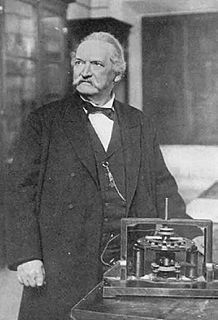 W
WAntonio Pacinotti was an Italian physicist, who was Professor of Physics at the University of Pisa.
 W
WCharles Grafton Page was an American electrical experimenter and inventor, physician, patent examiner, patent advocate, and professor of chemistry.
 W
WThe Honourable Sir Charles Algernon Parsons, was an Anglo-Irish engineer, best known for his invention of the compound steam turbine, and as the namesake of C. A. Parsons and Company. He worked as an engineer on dynamo and turbine design, and power generation, with great influence on the naval and electrical engineering fields. He also developed optical equipment, for searchlights and telescopes.
 W
WHippolyte Pixii (1808–1835) was an instrument maker from Paris, France. In 1832 he built an early form of alternating current electrical generator, based on the principle of electromagnetic induction discovered by Michael Faraday. Pixii's device was a spinning magnet, operated by a hand crank, where the north and south poles passed over a coil with an iron core. A current pulse was produced each time a pole passed over the coil. He also found that the current direction changed when the north pole passed over the coil after the south pole. Later, acting on a suggestion by André-Marie Ampère, other results were obtained by introducing a commutator which produced a pulsating direct current. At that time direct current was preferable to alternating current. Although Pixii did not fully understand electromagnetic induction, his device led to more sophisticated devices being constructed.
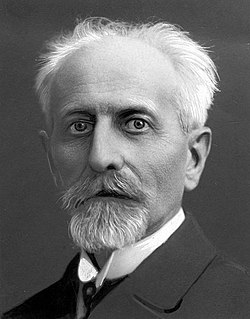 W
WKarol Franciszek Pollak was a Polish electrotechnician, inventor and businessman.
 W
WSidney Howe Short was an electrical engineer, inventor, physicist, professor and businessman. He is known for the development of electric motors and electric railway equipment. His inventions were so successful that even his competitors dubbed him "The Trolley King". He also developed telephone equipment much like that of Alexander Graham Bell. As a businessman he was president, key engineer, or advisor of different companies related to electrical equipment. It is claimed that he had nearly as many electrical innovations as Thomas Edison.
 W
WHenry Sutton was an Australian designer, engineer, and inventor credited with contributions to early developments in electricity, aviation, wireless communication, photography and telephony.
 W
WSir Joseph Wilson Swan FRS was an English physicist, chemist, and inventor. He is known as an independent early developer of a successful incandescent light bulb, and is the person responsible for developing and supplying the first incandescent lights used to illuminate homes and public buildings, including the Savoy Theatre, London, in 1881.
 W
WSir John Sealy Edward Townsend, FRS was an Irish mathematical physicist who conducted various studies concerning the electrical conduction of gases and directly measured the electrical charge. He was a Wykeham Professor of physics at Oxford University.
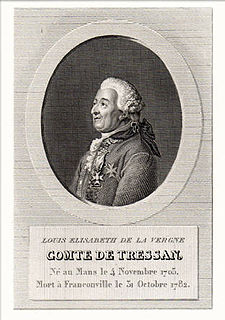 W
WLouis-Élisabeth de la Vergne, comte de Tressan was a French soldier, physician, scientist, medievalist and writer, best known for his adaptations of "romans chevaleresques" of the Middle Ages, which contributed to the rise of the Troubadour style in the French arts.
 W
WAlessandro Giuseppe Antonio Anastasio Volta was an Italian physicist, chemist, and pioneer of electricity and power who is credited as the inventor of the electric battery and the discoverer of methane. He invented the Voltaic pile in 1799, and reported the results of his experiments in 1800 in a two-part letter to the President of the Royal Society. With this invention Volta proved that electricity could be generated chemically and debunked the prevalent theory that electricity was generated solely by living beings. Volta's invention sparked a great amount of scientific excitement and led others to conduct similar experiments which eventually led to the development of the field of electrochemistry.
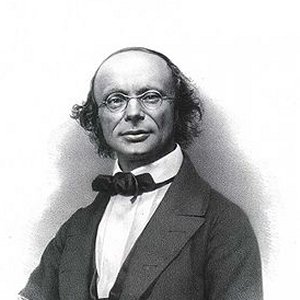 W
WWilhelm Eduard Weber was a German physicist and, together with Carl Friedrich Gauss, inventor of the first electromagnetic telegraph.
 W
WSir Charles Wheatstone FRS FRSE DCL LLD, was an English scientist and inventor of many scientific breakthroughs of the Victorian era, including the English concertina, the stereoscope, and the Playfair cipher. However, Wheatstone is best known for his contributions in the development of the Wheatstone bridge, originally invented by Samuel Hunter Christie, which is used to measure an unknown electrical resistance, and as a major figure in the development of telegraphy.
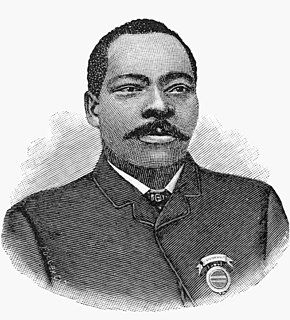 W
WGranville Tailer Woods was an inventor who held more than 60 patents in the U.S. He was the first African American mechanical and electrical engineer after the Civil War. Self-taught, he concentrated most of his work on trains and streetcars. One of his notable inventions was a device he called the Synchronous Multiplex Railway Telegraph, a variation of induction telegraph which relied on ambient static electricity from existing telegraph lines to send messages between train stations and moving trains. His work assured a safer and better public transportation system for the cities of the United States.